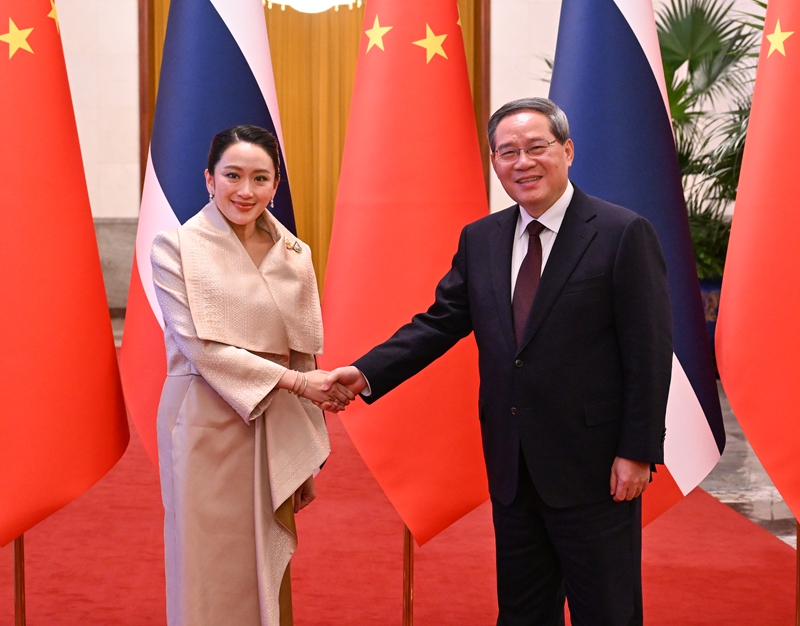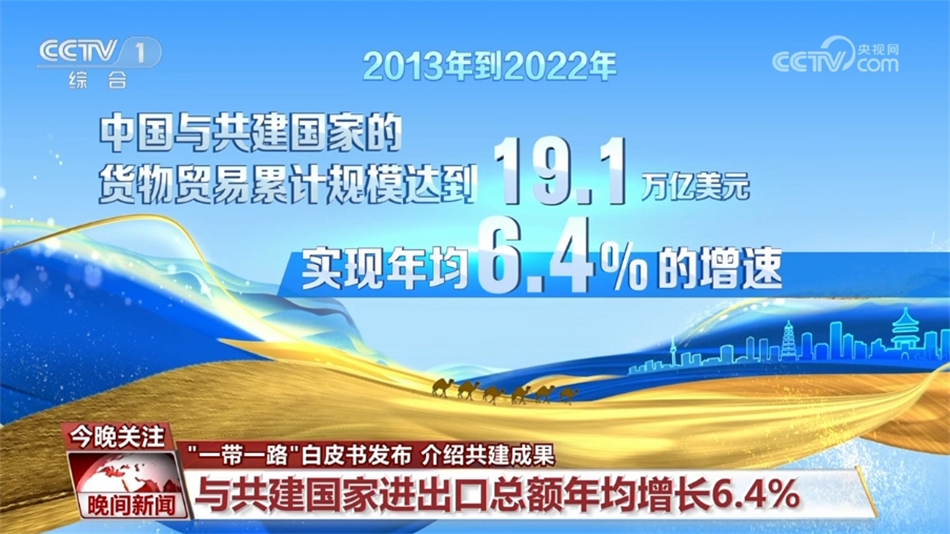Digital Evidence: Although It Is A Strategic Partner, China Has Not Made Significant Investments In Iran In The Past 10 Years
Digital Evidence: Although It Is A Strategic Partner, China Has Not Made Significant Investments In Iran In The Past 10 Years
Speaking of which, the relationship between China and Iran seems to be quite strong. In 2016, the two upgraded their relationship to a comprehensive strategic partner. On the surface, they had to go back and forth, and military exercises were held, but in terms of economy, especially in investment, there was really no big move in the past 10 years.
Speaking of which, the relationship between China and Iran seems to be quite strong. In 2016, the two upgraded their relationship to a comprehensive strategic partner. On the surface, they had to go back and forth, and military exercises were held, but in terms of economy, especially in investment, there was really no big move in the past 10 years.
The projects that Chinese companies spend a lot of money basically revolve around Iran, turning to Central Asia, the Caucasus and even Arab countries to engage in infrastructure and energy cooperation.
The data is there, and it won't lie. I checked various sources, from Wikipedia to think tank reports, and then to the analysis of the Gang, all pointing to a fact: although the actual investment scale is pitifully small, far less than expected.
Why is this? Simply put, US sanctions are the number one killer, and coupled with Iran's internal political uncertainty, Chinese companies feel that the risk is too high and it is not cost-effective.

In January 2016, the Chinese leader visited Iran and the two signed a bunch of agreements when China's large state-owned oil companies, such as PetroChina or Sinopec, finalized the development of the South Pals gas field worth $4.8 billion.
This is the last time that a relatively large energy investment is the last time. South Pars is one of the world's largest natural gas fields. Iran urgently needs technological upgrades. Chinese companies originally planned to inject funds and technology. But the good times did not last long. In 2018, the Trump administration of the United States restarted comprehensive sanctions on Iran, and Chinese companies could not withstand the pressure and gradually withdrew.
The workers' equipment has been removed and the project has been ruined. Since then, China's energy investment in Iran has almost stagnated, and by 2023, the total investment has barely remained at a low level, with no more transactions of similar scale emerging, according to the U.S. Enterprise Institute.
According to tracking by the American Enterprise Research Institute, China's total overseas investment from 2013 to 2023 reached US$942 billion, covering hundreds of countries around the world, but Iran did not get much share. Specifically for Iran, the cumulative investment since 2007 is less than US$5 billion, which includes all areas, from energy to infrastructure.
Think about it, Iran only accounts for such a fraction of the 942 billion market, with a proportion of less than 0.5%. A more detailed split, from 2018 to 2022, China's investment in Iran was only US$618 million, the data comes from a report from the Israeli National Security Institute.
618 million sounds like a lot, but in five years, the average annual rate is over 100 million. Compared with China's railway projects in Kazakhstan or Uzbekistan, a project is 4.7 billion, which is too obvious.

In March 2021, the two signed another 25-year cooperation agreement, and this thing was hot. Iranian media said that China would invest $400 billion to cover oil and gas, chemicals, infrastructure, transportation and telecommunications. It sounds awesome, right? But what about reality? By 2024, the actual funds in place will be only about US$185 million. According to follow-up reports, most of the promised investments are still on paper.
Why didn't it land? Sanctions are the main reason. Banks in China dare not transfer money easily, and companies are afraid of being affected by secondary US sanctions. Iranian officials have complained that Chinese companies are too cautious, but from a Chinese perspective, this is called pragmatism. Some of the small projects mentioned in the agreement, such as the electrification of the railway from Tehran to Mashhad, are worth 1.5 billion. The one signed in 2017 has barely advanced a little, but it has not become a climate either. Overall, in the past 10 years, China has had only a handful of major projects in Iran, and no more than 5 have been implemented.
Comparing China's investment in other places makes it even more heartbreaking. China's Belt and Road Initiative, from its launch in 2013 to the first half of 2025, the total investment exceeded US$570 billion and the contract was signed was 660 billion. Neither Iran nor Russia were on the list, and Central Asian countries took the big lead.
For example, Chinese companies hold 51% of the shares of the Kyrgyzstan-Uzbekistan Railway, worth 4.7 billion yuan, which connects Kazakhstan and the Caucasus, and cargo throughput increased by 68% last year. The route through Russia has dropped by more than 45%. Why bypass Iran?
Because there are risks on the Iranian border, China has also been involved in the Zangzur Corridor project in Azerbaijan. There is a trade route left over from the Trump era. Both Iran and Russia criticize it, but Chinese companies still invest money. In the Arab countries, China has invested in solar energy and ports, and agricultural investment in Kazakhstan increased by 30% in 2024, with a total trade volume of 94.8 billion.
Central Asia has attracted 25 billion yuan in technology and manufacturing investment in China as a whole, and wind turbines, power grids and other projects are all real projects.
Having said that, this is not only a matter of money, but also geopolitics. China has too much entanglement with the Western economy and its exports rely on the EU and the United States. How dare I offend people for Iran? The report from think tanks said that although the general shows in Beijing, Tehran and Moscow are united, they hold summits and conduct military exercises, these are mostly symbolic.
In actual economic cooperation, China attaches more importance to low risks and high returns. Where is Iran? The economy is overwhelmed by sanctions. In 2023, the inflation rate exceeds 40%, the unemployment rate is high, and internal political turmoil has discouraged foreign capital. Chinese companies are not philanthropists and will not bet on their wealth to get into troubled waters.

Data shows that from 2020 to 2023, China's exports to Iran increased by 14%, reaching 9.44 billion, but imports were mainly oil, and the total trade volume hovered around tens of billions, without a breakthrough growth.
Digging deeper into the reasons, US sanctions are external factors, and Iran itself has its own responsibility. Iran's nuclear issue and tensions with the West have deteriorated the investment environment. China invested 18.2 billion from 2010 to 2020, mainly in energy, but it has dropped sharply afterwards. Iran wants to take advantage of the Belt and Road Initiative, but on the BRI project map, Iran is not the core node.
China prefers the Central Asian Corridor, where it is stable and returns quickly. In 2025, China's trade with Central Asia reached 94.8 billion yuan, and the focus of investment shifted to digital infrastructure, optical cable laying and signal tower construction were all high-tech. Iran criticizes these routes but is unable to change them. Chinese companies hold shares in Central Asia Railways, and the goods increased by 68%. This data comes from official statistics and will not be fake.
In 2025, China continued to promote pragmatic diplomacy. At the third Belt and Road Forum, hundreds of project reports were reviewed, and Iran was still a marginal role. Russia and Iran signed a 20-year treaty to strengthen economic ties, but have no military obligations.
China will invest in digital projects in the Caucasus. If Iran does not adjust and integrates into the regional map, it will further lag behind economically. The think tank reports that unless Iran repositions, it will continue to be marginalized in geopolitical terms. China's commitment to investing in Iran is still there, but the actual progress is slow. The past 10 years are a living example.
This partnership is famous and practical, but the real part is in trade and oil, and the majority of investment is absent. The data is proof: from 2015 to 2025, there were few major projects, with a cumulative investment of less than 5 billion yuan. Compared with the global 942 billion yuan, Iran's share is minimal. Why? The risks are high and the returns are low, and Chinese companies are very good at it.
If Iran wants to invest more, it must first ease the external environment. As for China, continue to balance and make money that should be made without traversing the minefield. To put it down to the point, no one is stupid in the business world, and the partner is a partner, so the money must be calculated clearly.





